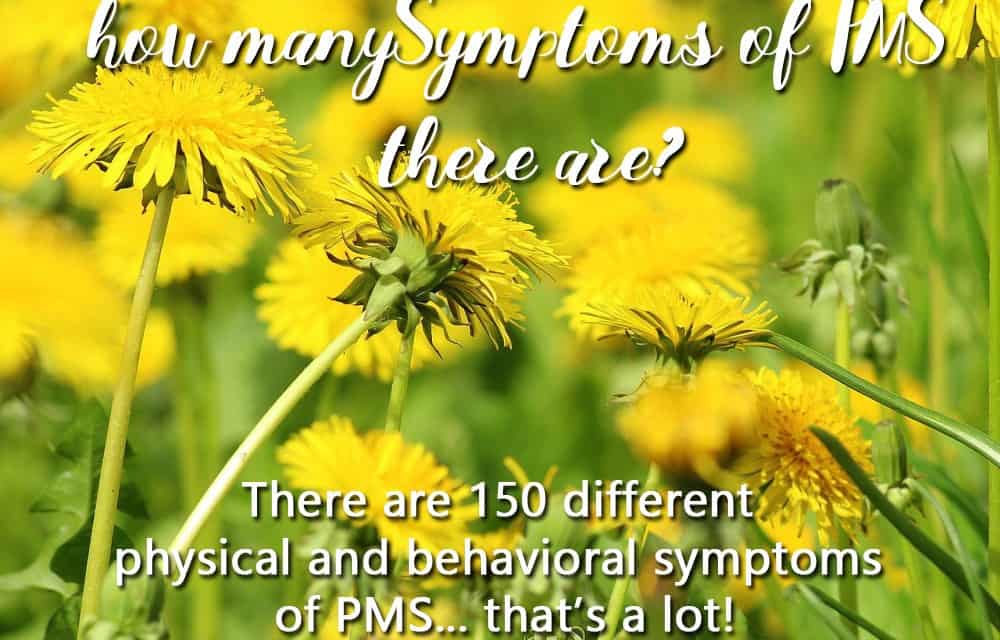There are some common generalizations about premenstrual syndrome, or PMS. These lead to many assuming that all women have the same experience with the problem, month in and month out. The truth is that women experience a range of different symptoms when it comes to PMS. The severity can be different, with some women having few and relatively painless symptoms, while others are at the other end of the scale.
Additionally, an individual woman’s experience may vary from period to period. This can be especially so with alternating periods, as eggs are released from alternate ovaries each month.
Statistics on Severity and Duration of Symptoms
Research shows that approximately 5% of women experience severe symptoms of PMS. On the other hand, 85% claim they only suffer mild to moderate symptoms of PMS, and the remaining percentage of women don’t usually show any signs of discomfort at that time of the month.
Some women begin suffer from PMS one to two weeks before their period. Studies indicate that the majority report experiencing symptoms around six days before their actual menstruation begin.
These symptoms usually disappear within three days of the start of their menstrual bleeding. There are 150 different physical and behavioral symptoms of PMS classified by experts. However, the range of symptoms experienced by most women is far smaller.
The following are some of the most common symptoms associated with PMS.
Physical Symptoms
- Mild headaches and migraines
- Decreased libido
- Food cravings
- Low back pain and joint pain
- Dizziness
- Acne and pimples
- Palpitations and pounding heartbeat
- Abdominal bloating and weight gain
- Gastrointestinal upset
- Fluid retention
- Muscle aches and cramps
- Breast tenderness and swelling
- Sleep disturbances, such as insomnia and fatigue
- Hot flushes
- A tendency towards hypoglycemia or low blood sugar, resulting in a craving for sweet foods
- Increased sensitivity to light, touch and sounds
Behavioral/ Psychological Symptoms (Hormones greatly influence our emotions.)
- Mood swings and depressive moods
- Irritability
- Aggression
- Difficulty focusing and reduced alertness
- Lowered self-esteem
- Feeling upset and restless
- Feeling awkward and clumsy
Who Are More At Risk of Experiencing PMS Symptoms?
- There is a higher incidence rate among teenage girls and younger women
- Women who have depressive tendencies
- Women who are living a sedentary lifestyle
- Women continually exposed to stressful situations
- Too much sugar or caffeine in the diet
- Excessive alcohol use
- Genetics, if other members of the immediate family have symptoms, you may too.
- Vitamin B6, magnesium and calcium deficiencies.
If a woman’s PMS symptoms become so severe that she cannot function normally, her condition may be classified as PMDD or Premenstrual Dysphoric Disorder.
How Is PMS Diagnosed?
Before consulting your doctor about your own PMS symptoms, it would help with the diagnosis if you can provide a list of both physical and behavioral symptoms that you experience each month, and the dates and times when you do. This is because some PMS symptoms may also represent warning signs of other medical conditions.
Managing PMS Symptoms
If you want to take some control and try to manage your own symptoms naturally, one of the most important steps to take is to reduce your stress levels.
Next, make healthy changes to your diet. Start by reducing sugar and caffeine. Also go easy on the salt shaker. Try to include fiber-rich foods in your diet, such as beans, nuts, vegetables, fruits and whole grains.
Taking two tablespoons of flax seeds per day is also helpful in managing the effects of hormonal fluctuations during this time of the month. Simply add some flaxseeds to your smoothies or sprinkle some on your salads.
For many or most women, modern diets may not have adequate nutrient value, even if food (energy) volume is sufficient or even excessive. Therefore, vitamin and mineral supplementation is often a must. Consult your doctor so you will know the right amount of vitamins and minerals to take daily.
Exercise should be an indispensable part of your PMS management plan. There are herbs for specific PMS symptoms that you can use too. Some herbs have been proven to reduce PMS symptoms. These include chaste berry fruit extract, dandelion root and wild yam.





Recent Comments